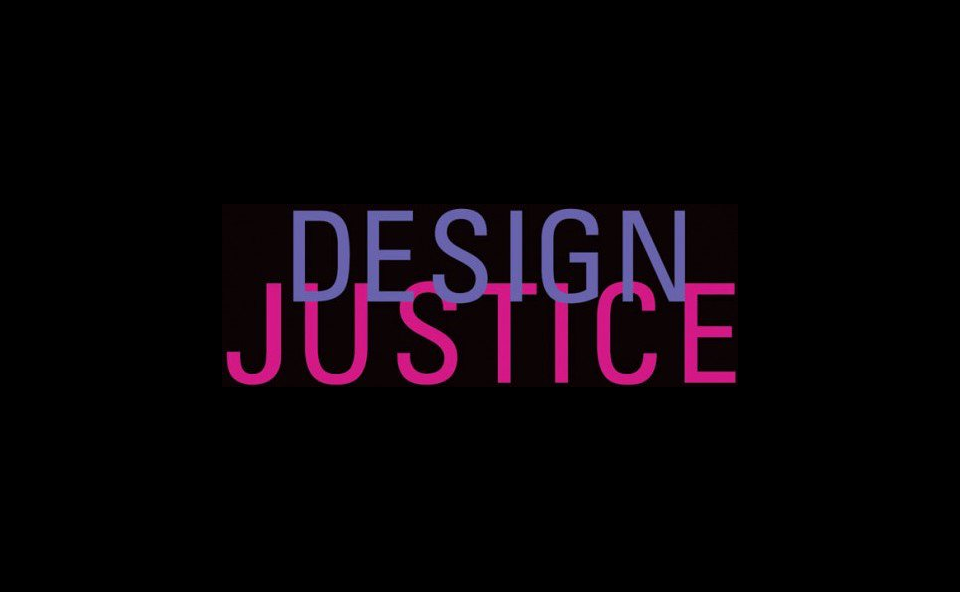
In the past few years, I realized that I have no idea why I studied design. Not only that but, I’m pretty sure I did not know what design was when I first embraced the choice to study it. Anyhow, what I can tell today with more than 10 years in the field is that I do believe in change and I know design can help us achieve it. Such belief is reinforced when reading ideas just like the one presented in the book by Sasha Costanza-Chock.
I won't pretend to agree on every single argument or position presented in the pages of “Design Justice: Community-Led Practices to Build the Worlds We Need” but, I do consider the book is an incredible invitation for a reflective and political positioning of designers and their practices. This makes the book rather than just interesting to read, but powerful.
From the statement that design “too often contributes to the reproduction of systemic oppression” and by tackling the universalist hegemonic design narrative, Sasha Costanza-Chock attempts to question the relation of design, power and social justice. The book presents design justice as “an approach to design that is led by marginalized communities and that aims explicitly to challenge, rather than reproduce, structural inequalities”.
The book also offers a good combination of examples of grassroots technology and critical analysis of how they are overtaken by big corporations. These are complemented by notions of participatory design narratives and popular pedagogies as to offer a theoretical understanding of our current IT-design landscape.
The book reveals different ways in which design practice is hegemonic and then builds on a design justice approach that advocates for communal design, relying on already existing grassroots project, social campaigns and real worlds examples. In Costanza-Chock’s words, design justices can be understood as “an exploration of how design might be led by marginalized communities, dismantle structural inequality, and advance collective liberation and ecological survival”.
The book reveals different ways in which design practice is hegemonic and then builds on a design justice approach that advocates for communal design, relying on already existing grassroots project, social campaigns and real worlds examples.
Understanding the book as a call for the massification of such ideas. I would like to take the positive impulse, and encourage everyone to see design justice as “a framework [that] can provide tools to support existing and emergent critique of design”. In such a constellation, Costanza-Chock points out the importance of intersectional feminist networked movements and how these are “increasingly engaged in debates about the relationships between technology, design, and social justice”. Even when these movements are not properly accredited for their work in mainstream design discourse, through the pages of this books it is clearly stated that they play a major roll on pushing changes that tackle diverse aspects of the matrix of domination. It is worth mentioning that one key aspect of such lack of accreditation is related to the movements relying on corporate software, that furthers the lack of representation of marginalised communities and therefore the reproduction of hetero-patriarchal design discourse.
Even though corporate social media “provides terrible tools for the most important task of community organizers: to move people up the ladder of engagement”, and despite the fact that there are several design-software to enable community managers, the reality is most people, even the organisers of activities and campaigns, “use the most popular corporate social network sites and hosted services as tools to advance our goals. We work within the affordances of these sites and work around their limitations. We do this even when these tools are a poor fit for the specific task at hand, and even when they use exposes movement participants to a range of real harms”.
I will like to highlight the particular take on uncovering the interconnections of the matrix of domination, as means to break the myth of universal design: “An affordance for some is a disaffordance for others”. Rather than advocating for a design for everybody, the claim in this book is more honest: “designers constantly make choices about which users to privilege and which will have to do more work. (…) The point is not that it’s wrong to privilege some users over others; the point is that these decisions need to be made explicit”. Design justice invites us to decide what to design and who to design it for, through a critical analysis of the matrix of domination and how it reproduces power and the concentration of privilege. In other words, design justice understands that a thorough analysis of the “white supremacist heteropatriarchal capitalism and settler colonialism” that rules the global system, should be at the core of all design decisions.
Design justice invites us to decide what to design and who to design it for, through a critical analysis of the matrix of domination and how it reproduces power and the concentration of privilege.
But to change who design reaches, we must talk about who gets to design? This question could certainly be the ‘red thread’ of our whole discussion on design justice. The conceptualisation and deep analysis of the ontological dominance of the design-praxis are strongly present in the book: “If white cis male designers, engineers, and decision-makers run most product design processes, white cis men will be more likely to have their needs met than members of other groups.”
The constant systemic reflection is what makes the narrative presented in this book special. It is not all about “including” everybody as part of the designing chain, neither is it just a matter of symbolical diversity in power positions. It is rather a matter of what socio-political values we (choose to) represent while performing design. If the design concept we are representing depends on the reproduction of any aspect of the matrix of dominance, it is most probable that what we design won't adjust to ideas/understandings that attempt to challenge the dominant system.
The Design justice vision presented in this book “includes a call to dismantle the matrix of domination and challenge intersectional, structural inequality, it requires more than a recognition that employment diversity increases capitalist profitability. Employment in paid design fields is important, but is not the whole picture. Design justice also involves rethinking other aspects of design practice, including the intended design beneficiaries: the “users””.
By recalling Foucault’s perception of liberal-knowledge approaches as a form to perpetuate cultural violence, Costanza-Chock triggers a post-structuralist perception of participatory design approaches, that force us to see that “power shapes participation in all design processes”. The use of participatory practices, co-design or any HCD form cannot guarantee horizontal participation and design justice process, per se. Rather, the designer should constant evaluate the relation between design methods and design politics. Arguing that to truly commit with their design methods/practices, design approaches should be ideologically positioned by having a clear and sound intent of dismantling the matrix of domination.
Designing with/for peoples comes with great responsibility. It is not just about extracting ideas and feelings.
Even though it is known that “the vast majority of innovation” comes directly from end-users’ hacks or transformations performed to make products suit their real needs, these are not given any credit. A phenomenon named by Costanza-Chock as “extractive design” is quite widespread among the different forms of participatory design. Which means that designers still hold a power position that is overly focused on solution framing as well as on decision making at the implementation phase. All systemic benefits then goes to designers themselves (credits, rights, payment and authority to further utilize such ideas). This way users, even when included, are just seen as an information source that should be consulted during a particular phase of an already structured design process, and asked specific questions geared towards a preset solution. Hence, separating people from a holistic life experience.
Designing with/for peoples comes with great responsibility. It is not just about extracting ideas and feelings.
For Costanza-Chock, this is a critical aspect of mainstream participatory-design discourses which helps to reproduce the classic power structure of the design chain, while creating the illusion, even for the designers themselves, of representing people’s “real” needs. In the same line, it is important to incorporate a “decolonising” perspective, starting first by accepting that the extractive logic has historically been used “under white supremacist capitalist heteropatriarchy and settler colonialism, the work, ideas, inventions, belongings, land, and very bodies of women, Black people, people of color, and indigenous peoples have been appropriated (stolen) for centuries by wealthy white (cis)men”. It is indeed important for me to highlight this "extractive design" perspective that could potentially be coopted by the hegemonic design pedagogy and turned into a neo-liberal version. Resulting in an academic mechanism of friendly appropriating cultural histories of communities, while shifting their knowledge into the academic domain under the fake notion of communal process design. Just the way grassroots hacklabs turned into government city labs.
However, not all are critical examples. By recalling the history and achievements of the Disability Rights and Disability justice movement, which pushed for a different understanding of disability, Costanza-Chock demonstrates how when we break the forms and dynamics of work that fit into obsolete hierarchies, the results are different. Showing that it is not just about changing concrete solutions, but to find the way involve the directly affected community: “that involving members of the community that is most directly affected by a design process are crucial, both because justice demands it and also because the tacit and experiential knowledge of community members is sure to produce ideas, approaches, and innovations that a nonmember of the community would be extremely unlikely to come up with”.
The fact that this example is not popularly well known, lead us to another key point on the book, design narratives and its relation towards the matrix of domination:
“Popular narratives about innovation are dominated by the figure of the genius. In popular culture, we are often led to believe that all technology is created by brilliant, well-educated, mostly white (cis)men, working in university labs, corporate R&D departments, or perhaps in their garages, who go on to found Silicon Valley start-ups”.
In keeping with her role as a professor, Costanza-Chock closes her argument by stating the importance of promoting design justice in design education, attempting to particularly address the need of different design pedagogies for it. This would include special emphasis on Paulo Freire's work and his contribution to Popular Education from a non-hierarchical educational perspective; rescuing the communal aspect of Constructivist pedagogies in which “teachers act as facilitators to help students achieve their own learning goals”.
If we are truly willing to dismantle the master’s house and its “white supremacist heteropatriarchal capitalism and settler colonialism” foundations, then these are the steps that must be taken.
The book offers an extensive and critical analysis of the different layers that constitute the practice and discipline of design. So extensive that it is not possible to make a fully fair review. Many of the ideas presented in this book pushed me as a designer to constantly revise my processes, my political values and its connection towards my design praxis. With no further ado, it only remains to recommend that you read the book but above all that you take an active part in the discussion at: https://design-justice.pubpub.org/
Many of the ideas presented in this book pushed me as a designer to constantly revise my processes, my political values and its connection towards my design praxis.
- 6924 views






Add new comment